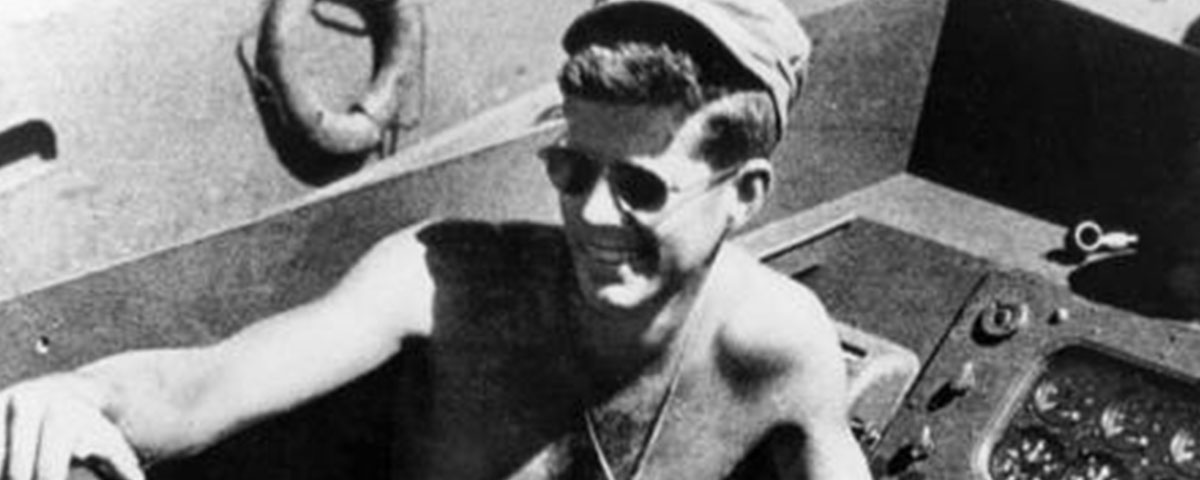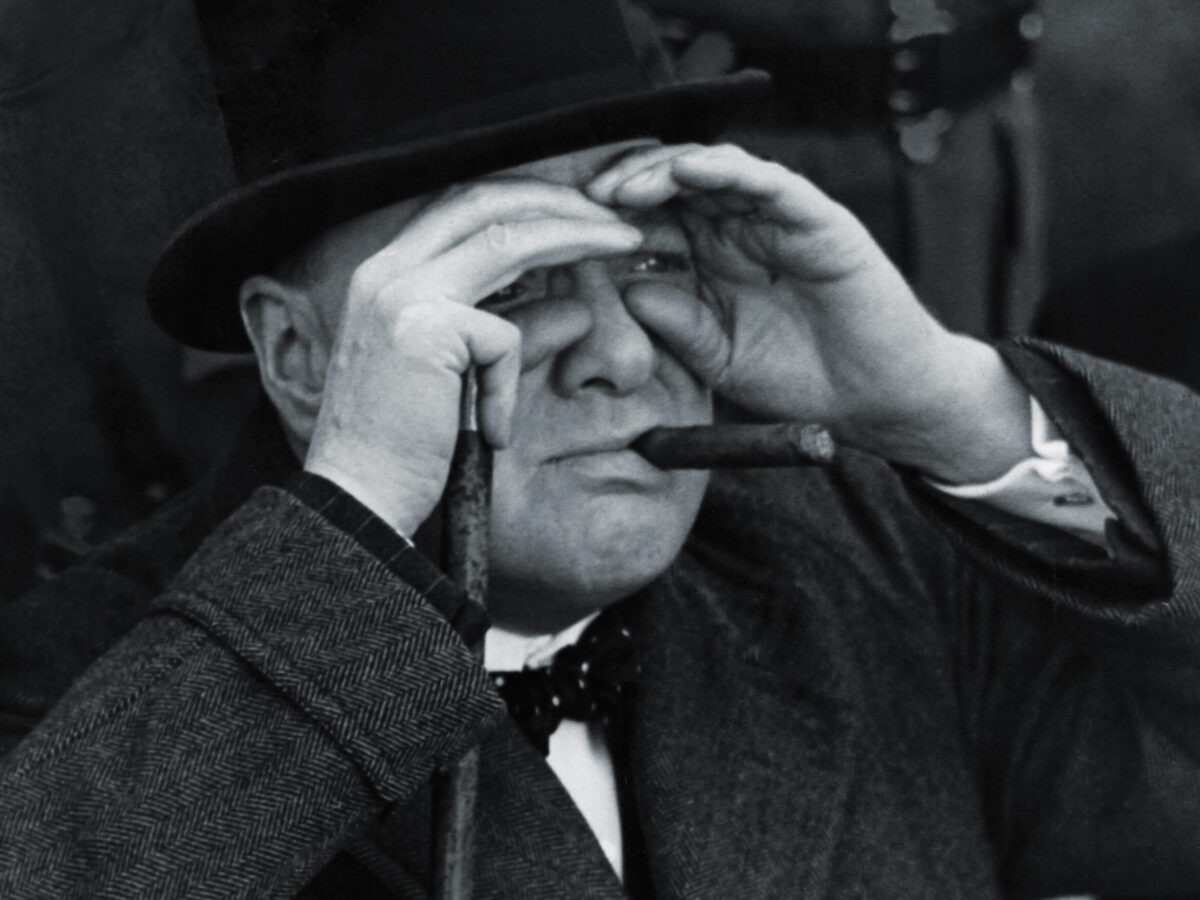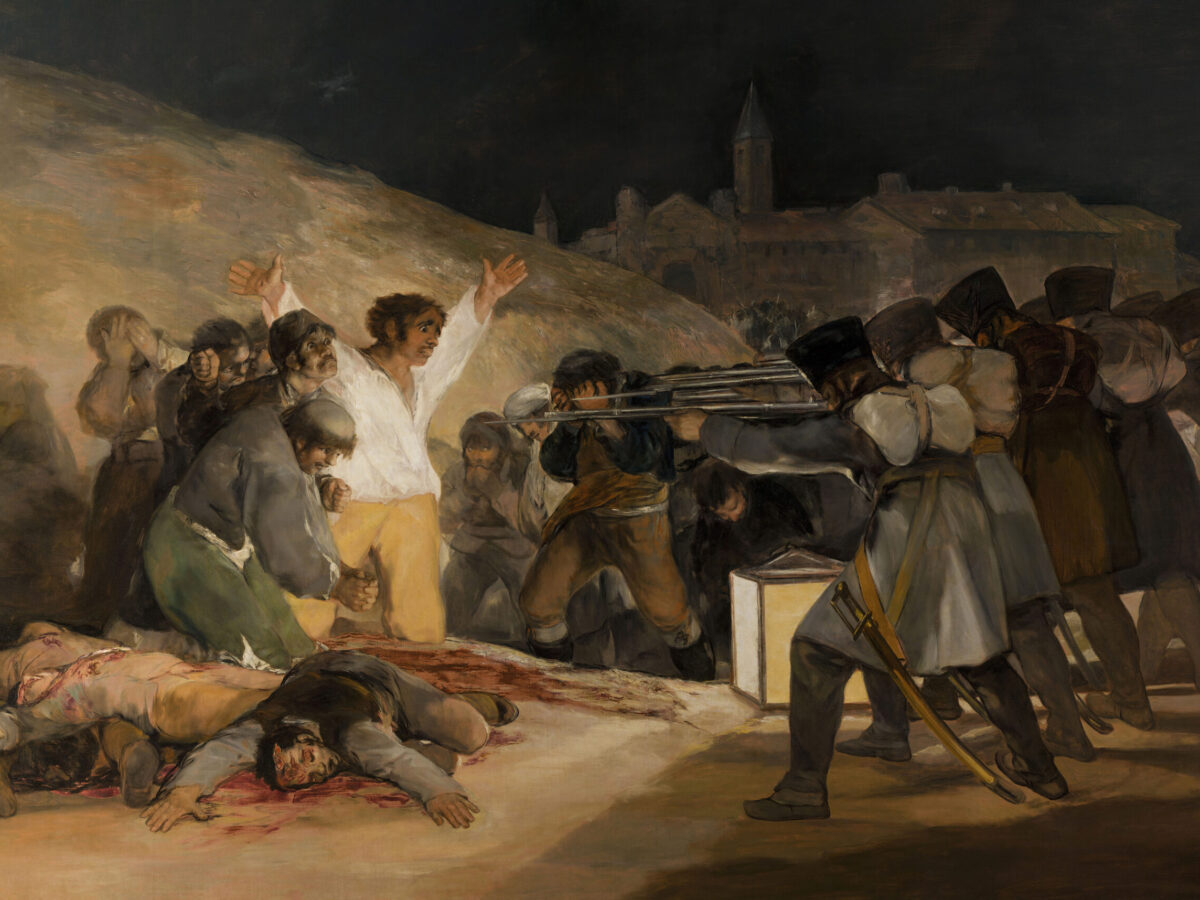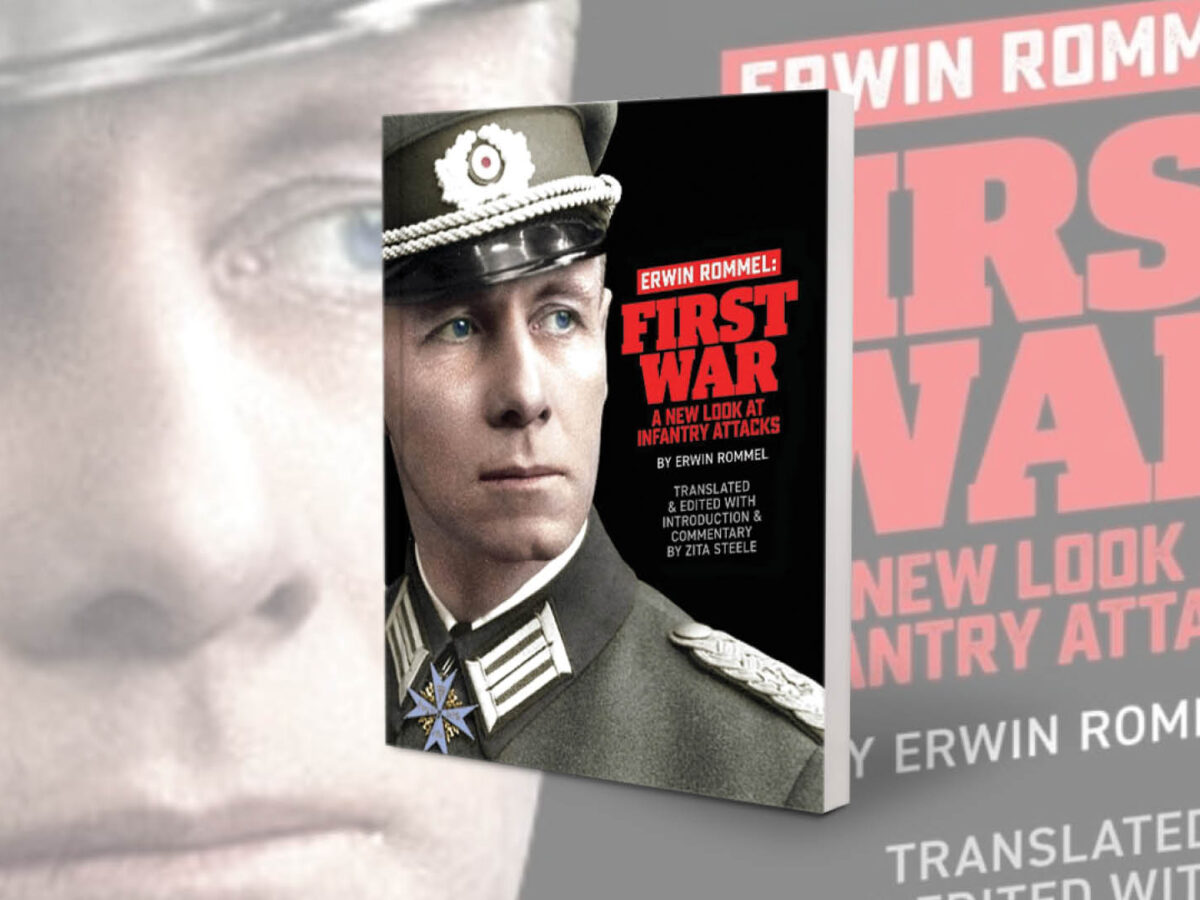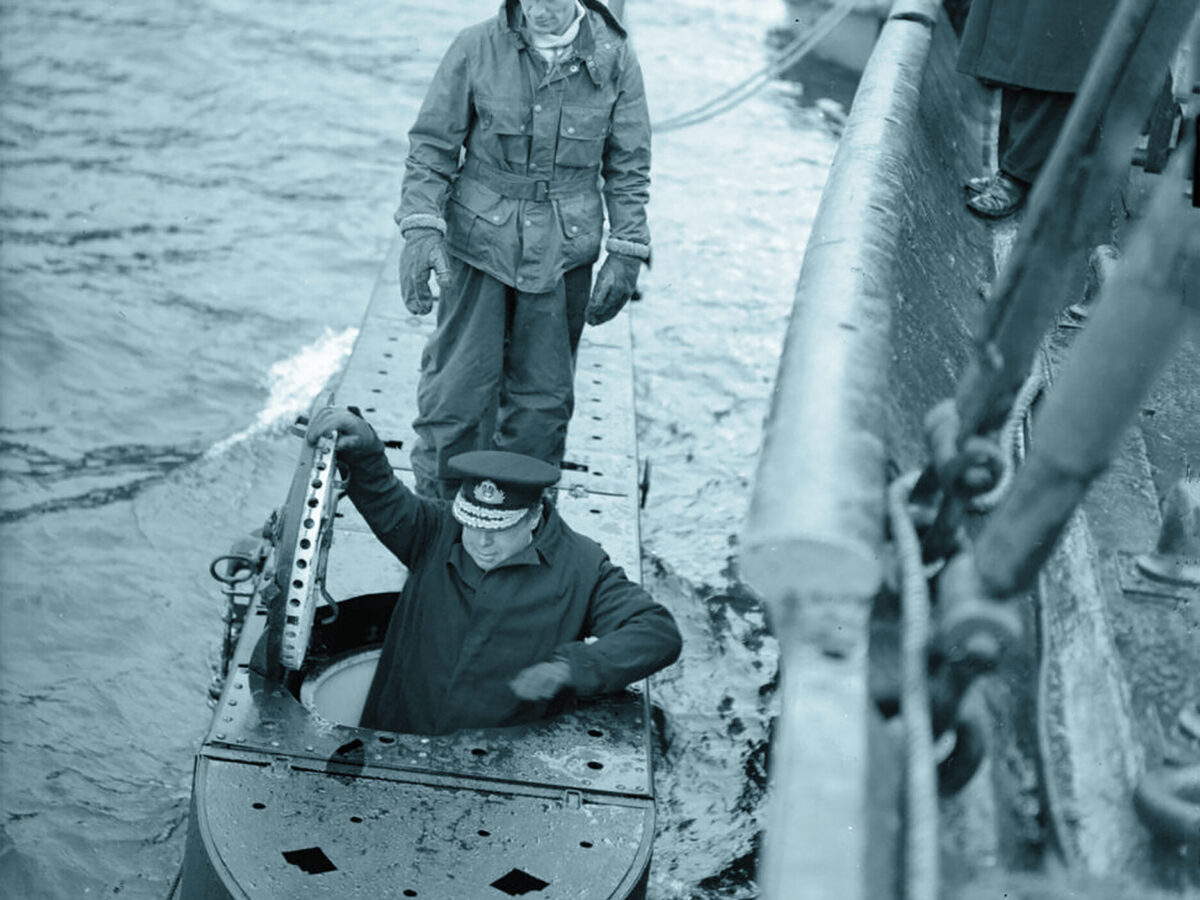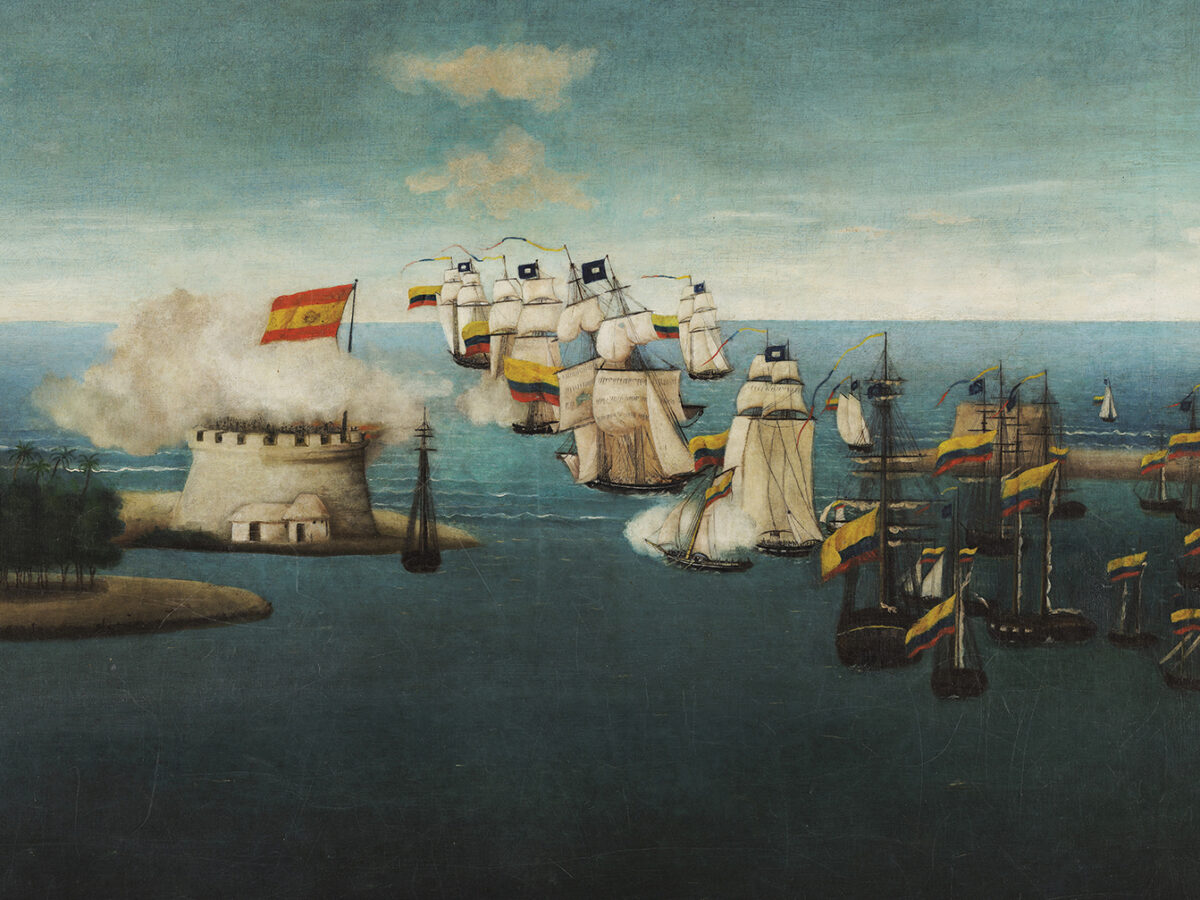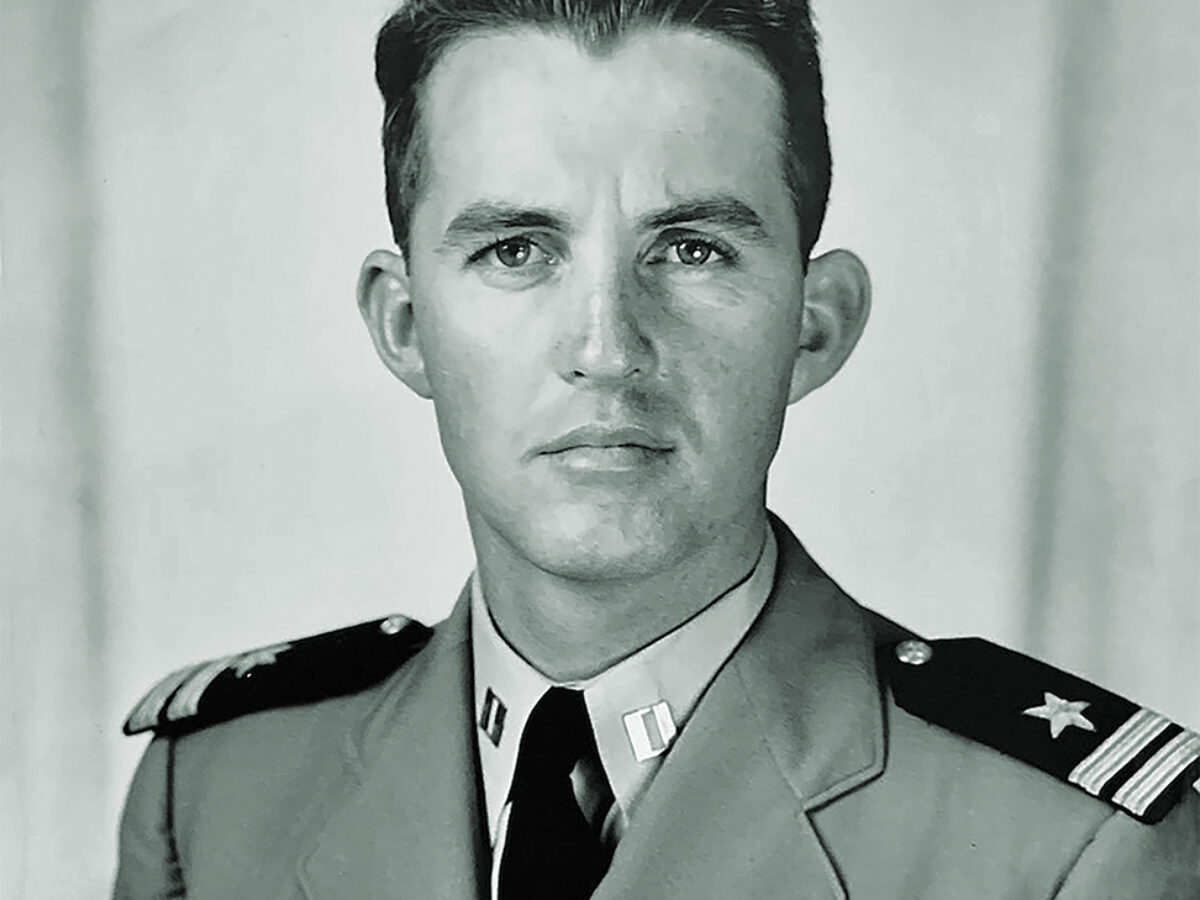The most famous collision in U.S. Navy history occurred at about 2:30 a.m. on August 2, 1943, a hot, moonless night in the Pacific. Patrol Torpedo boat 109 was idling in Blackett Strait in the Solomon Islands. The 80-foot craft had orders to attack enemy ships on a resupply mission. With virtually no warning, a Japanese destroyer emerged from the black night and smashed into PT-109, slicing it in two and igniting its fuel tanks. The collision was part of a wild night of blunders by 109 and other boats that one historian later described as “the most screwed up PT boat action of World War II.” Yet American newspapers and magazines reported the PT-109 mishap as a triumph. Eleven of the 13 men aboard survived, and their tale, declared the Boston Globe, “was one of the great stories of heroism in this war.” Crew members who were initially ashamed of the accident found themselves depicted as patriots of the first order, their behavior a model of valor.
The Globe story and others heaped praise on Lieutenant (j.g.) John F. Kennedy, commander of the 109 and son of the millionaire and former diplomat Joseph Kennedy. KENNEDY’S SON IS HERO IN PACIFIC AS DESTROYER SPLITS HIS PT BOAT, declared a New York Times headline. It was Kennedy’s presence, of course, that made the collision big news. And it was his father’s media savvy that helped turn an embarrassing disaster into a tale worthy of Homer.
Airbrushed from this PR confection was Lieutenant Kennedy’s reaction to the accident. The young officer was deeply pained by the death of two of his men in the collision. Returning to duty in command of a new breed of PT boat, he lobbied for dangerous assignments and displayed a recklessness that worried fellow officers. Kennedy, they said, was hell-bent on redeeming himself and getting revenge on the Japanese.
Kennedy would later embrace the myths of PT-109 and ride them into the White House. But in his last months in combat, he appeared to be a troubled young man trying to make peace with what happened that dark night in the Solomons.
Jack Kennedy was sworn in as an ensign on September 25, 1941. At 24, he was already something of a celebrity. With financial backing from his father and the help of New York Times columnist Arthur Krock, he had turned his 1939 Harvard thesis into Why England Slept, a bestseller about Britain’s failure to rearm to meet the threat of Hitler.

Getting young Jack into the navy took similar finagling. As one historian put it, Kennedy’s fragile health meant he was not qualified for the Sea Scouts, much less the U.S. Navy. From boyhood, he had suffered from chronic colitis, scarlet fever, and hepatitis. In 1940, the U.S. Army’s Officer Candidate School had rejected him as 4-F, citing ulcers, asthma, and venereal disease. Most debilitating, doctors wrote, was his birth defect—an unstable and often painful back.
When Jack signed up for the navy, his father pulled strings to ensure his poor health did not derail him. Captain Alan Goodrich Kirk, head of the Office of Naval Intelligence, had been the naval attaché in London before the war when Joe Kennedy had served as ambassador to the Court of St. James’s. The senior Kennedy persuaded Kirk to let a private Boston doctor certify Jack’s good health.
Kennedy was soon enjoying life as a young intelligence officer in the nation’s capital, where he started keeping company with 28-year-old Inga Marie Arvad, a Danish-born reporter already twice married but now separated from her second husband, a Hungarian film director. They had a torrid affair—many biographers say she was the true love of Kennedy’s life—but the relationship became a threat to his naval career. Arvad had spent time reporting in Berlin and had grown friendly with Hermann Göring, Heinrich Himmler, and other prominent Nazis—ties that raised suspicions she was a spy.
Recommended for you
Kennedy eventually broke up with Arvad, but the imbroglio left him depressed and exhausted. He told a friend he felt “more scrawny and weak than usual.” He developed excruciating pain in his lower back. Jack consulted with his doctor at the Lahey Clinic in Boston, and asked for a six-month leave for surgery. Lahey doctors as well as specialists at the Mayo Clinic diagnosed chronic dislocation of the right sacroiliac joint, which could only be cured by spinal fusion.
Navy doctors weren’t so sure that Kennedy needed surgery. He spent two months at naval hospitals, after which his problem was incorrectly diagnosed as muscle strain. The treatment: exercise and medication.
During Jack’s medical leave, the navy won the battles of Midway and the Coral Sea. Ensign Kennedy emerged from his sickbed ferociously determined to see action. He persuaded Undersecretary of the Navy James V. Forrestal, an old friend of his father, to get him into Midshipman’s School at Northwestern University. Arriving in July 1942, he plunged into two months of studying navigation, gunnery, and strategy.
During that time, Lieutenant Commander John Duncan Bulkeley visited the school. Bulkeley was a freshly minted national hero. As commander of a PT squadron, he had whisked General Douglas MacArthur and family from the disaster at Bataan, earning a Medal of Honor and fame in the book They Were Expendable. Bulkeley claimed his PTs had sunk a Japanese cruiser, a troopship, and a plane tender in the struggle for the Philippines, none of which was true. He was now touring the country promoting war bonds and touting the PT fleet as the Allies’ key to victory in the Pacific.
At Northwestern, Bulkeley’s tales of adventure inspired Kennedy and nearly all his 1,023 classmates to volunteer for PT duty. Although only a handful were invited to attend PT training school in Melville, Rhode Island, Kennedy was among them. Weeks earlier, Joe Kennedy had taken Bulkeley to lunch and made it clear that command of a PT boat would help his son launch a political career after the war.
![PT Boat Officers (L-R) James ("Jim") Reed, John F. Kennedy, George ("Barney") Ross [rear], and Paul ("Red") Fay, after surviving the Japanese attack. (Kennedy Presidential Library and Museum)](https://www.historynet.com/wp-content/uploads/2011/02/JFK-Solomons.jpg)
Once in Melville, Jack realized that Bulkeley had been selling a bill of goods. Instructors warned that in a war zone, PTs must never leave harbor in daylight. Their wooden hulls could not withstand even a single bullet or bomb fragment. The tiniest shard of hot metal might ignite the 3,000-gallon gas tanks. Worse, their 1920s-vintage torpedoes had a top speed of only 28 knots—far slower than most of the Japanese cruisers and destroyers they would target. Kennedy joked that the author of They Were Expendable ought to write a sequel titled They Are Useless.
On April 14, 1943, having completed PT training, Kennedy arrived on Tulagi, at the southern end of the Solomon Islands. Fifteen days later, he took command of PT-109. American forces had captured Tulagi and nearby Guadalcanal, but the Japanese remained entrenched on islands to the north. The navy’s task: Stop enemy attempts to reinforce and resupply these garrisons.
Except for the executive officer—Ensign Leonard Thom, a 220-pound former tackle at Ohio State—PT-109’s crew members were all as green as Kennedy. The boat was a wreck. Its three huge Packard motors needed a complete overhaul. Scum fouled its hull. The men worked until mid-May to ready it for sea. Determined to prove he was not spoiled, Jack joined his crew scraping and painting the hull. They liked his refusal to pull rank. They liked even more the ice cream and treats that the lieutenant bought them at the PX. Jack also made friends with his squadron’s commanding officer, 24-year-old Alvin Cluster, one of the few Annapolis graduates to volunteer for the PTs. Cluster shared Jack’s sardonic attitude toward the protocol and red tape of the “Big Navy.”
On May 30, Cluster took PT-109 with him when he was ordered to move two squadrons 80 miles north to the central Solomons. Here Kennedy made a reckless gaffe. After patrols, he liked to race back to base to snare the first spot in line for refueling. He would approach the dock at top speed, reversing his engines only at the last minute. Machinist’s Mate Patrick “Pop” McMahon warned that the boat’s war-weary engines might conk out, but Kennedy paid no heed. One night, the engines finally did fail, and the 109 smashed into the dock like a missile. Some commanders might have court-martialed Kennedy on the spot. But Cluster laughed it off, particularly when his friend earned the nickname “Crash” Kennedy. Besides, it was a mild transgression compared to the blunders committed by other PT crews, whom Annapolis grads called the Hooligan Navy. [See also: “The Truth About ‘Devil Boats’.”]
On July 15, three months after Kennedy arrived in the Pacific, PT-109 was ordered to the central Solomons and the island of Rendova, close to heavy fighting on New Georgia. Seven times in the next two weeks, 109 left its base on Lumbari Island, a spit of land in the Rendova harbor, to patrol. It was tense, exhausting work. Though PTs patrolled only at night, Japanese floatplane crews could spot their phosphorescent wakes. The planes often appeared without warning, dropped a flare, and then followed with bombs. Japanese barges, meanwhile, were equipped with light cannons far superior to the PTs’ machine guns and single 20mm gun. Most unnerving were the enemy destroyers running supplies and reinforcements to Japanese troops in an operation the Americans called the Tokyo Express. Cannons from these ships could blast the PTs into splinters.
On one patrol, a Japanese floatplane spotted the PT-109. A near miss showered the boat with shrapnel that slightly wounded two of the crew. Later, floatplane bombs bracketed another PT boat and sent the 109 skittering away in frantic evasive maneuvers. One of the crew, 25-year-old Andrew Jackson Kirksey, became convinced he was going to die and unnerved others with his morbid talk. To increase the boat’s firepower, Kennedy scrounged up a 37mm gun and fastened it with rope on the forward deck. The 109’s life raft was discarded to make room.
Finally came the climactic night of August 1 and 2, 1943. Lieutenant Commander Thomas Warfield, an Annapolis graduate, was in charge at the base on Lumbari. He received a flash message that the Tokyo Express was coming out from Rabaul, the Japanese base far to the north on New Guinea. Warfield dispatched 15 boats, including PT-109, to intercept, organizing the PTs into four groups. Riding with Kennedy was Ensign Barney Ross, whose boat had recently been wrecked. That brought the number of men aboard to 13—a number that spooked superstitious sailors.
GET HISTORY’S GREATEST TALES—RIGHT IN YOUR INBOX
Subscribe to our HistoryNet Now! newsletter for the best of the past, delivered every Monday and Thursday.
Lieutenant Hank Brantingham, a PT veteran who had served with Bulkeley in the famous MacArthur rescue, led the four boats in Kennedy’s group. They motored away from Lumbari at about 6:30 p.m., heading northwest to Blackett Strait, between the small island of Gizo and the bigger Kolombangara. The Tokyo Express was headed to a Japanese base at the southern tip of Kolombangara.
A few minutes after midnight, with all four boats lying in wait, Brantingham’s radar man picked up blips hugging the coast of Kolombangara. The Tokyo Express was not expected for another hour; the lieutenant concluded the radar blips were barges. Without breaking radio silence, he charged off to engage, presuming the others would follow. The nearest boat, commanded by veteran skipper William Liebenow, joined him, but Kennedy’s PT-109 and the last boat, with Lieutenant John Lowrey at the helm, somehow got left behind.
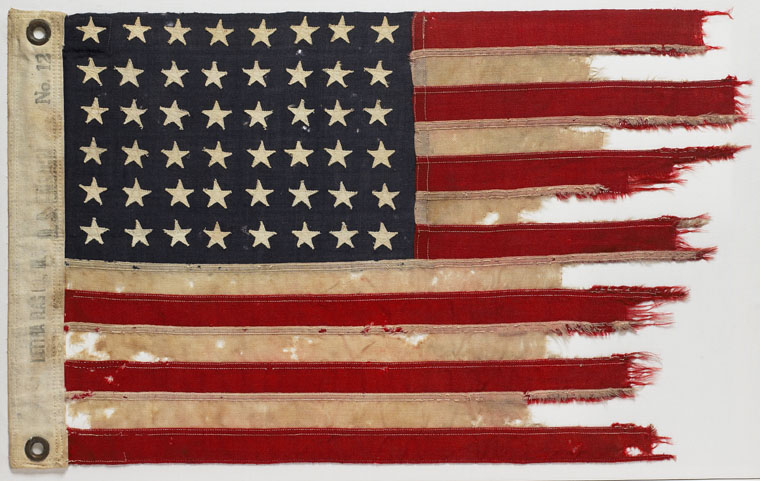
Opening his attack, Brantingham was surprised to discover his targets were destroyers, part of the Tokyo Express. High-velocity shells exploded around his boat as well as Liebenow’s. Brantingham fired his torpedoes but missed. At some point, one of his torpedo tubes caught fire, illuminating his boat as a target. Liebenow fired twice and also missed. With that, the two American boats made a hasty retreat.
Kennedy and Lowrey remained oblivious. But they were not the only patrol stumbling around in the dark. The 15 boats that had left Lumbari that evening fired at least 30 torpedoes, yet hit nothing. The Tokyo Express steamed through Blackett Strait and unloaded 70 tons of supplies and 900 troops on Kolombangara. At about 1:45 a.m., the four destroyers set out for the return trip to Rabaul, speeding north.
Kennedy and Lowrey remained in Blackett Strait, joined now by a third boat, Lieutenant Phil Potter’s PT-169, which had lost contact with its group. Kennedy radioed Lumbari and was told to try to intercept the Tokyo Express on its return.
With the three boats back on patrol, a PT to the south spotted one of the northbound destroyers and attacked, without success. The captain radioed a warning: The destroyers are coming. At about 2:30 a.m., Lieutenant Potter in PT-169 saw the phosphorescent wake of a destroyer. He later said that he, too, radioed a warning.
Aboard PT-109, however, there was no sense of imminent danger. Kennedy received neither warning, perhaps because his radioman, John Maguire, was with him and Ensign Thom in the cockpit. Ensign Ross was on the bow as a lookout. McMahon, the machinist’s mate, was in the engine room. Two members of the crew were asleep, and two others were later described as “lying down.”
Harold Marney, stationed at the forward turret, was the first to see the destroyer. The Amagiri, a 2,000-ton ship four times longer than the 109, emerged out of the black night on the starboard side, about 300 yards away and bearing down. “Ship at two o’clock!” Marney shouted.
Kennedy and the others first thought the dark shape was another PT boat. When they realized their mistake, Kennedy signaled the engine room for full power and spun the ship’s wheel to turn the 109 toward the Amagiri and fire. The engines failed, however, and the boat was left drifting. Seconds later, the destroyer, traveling at 40 knots, slammed into PT-109, slicing it from bow to stern. The crash demolished the forward gun turret, instantly killing Marney and Andrew Kirksey, the enlisted man obsessed with his death.
In the cockpit, Kennedy was flung violently against the bulkheads. Prone on the deck, he thought: This is how it feels to be killed. Gasoline from the ruptured fuel tanks ignited. Kennedy gave the order to abandon ship. The 11 men leaped into the water, including McMahon, who had been badly burned as he fought his way to the deck through the fire in the engine room.
After a few minutes, the flames from the boat began to subside. Kennedy ordered everyone back aboard the part of the PT-109 still afloat. Some men had drifted a hundred yards into the darkness. McMahon was almost helpless. Kennedy, who’d been on the Harvard swim team, took charge of him and pulled him back to the boat.
Dawn found the men clinging to the tilting hulk of PT-109, which was dangerously close to Japanese-controlled Kolombangara. Kennedy pointed toward a small bit of land about four miles away—Plum Pudding Island—that was almost certainly uninhabited. “We’ve got to swim to that,” he said.
They set out from the 109 around 1:30 p.m. Kennedy towed McMahon, gripping the strap of the injured man’s life jacket in his teeth. The journey took five exhausting hours, as they fought a strong current. Kennedy reached the beach first and collapsed, vomiting salt water.
Worried that McMahon might die from his burns, Kennedy left his crew near sundown to swim into Ferguson Passage, a feeder to Blackett Strait. The men begged him not to take the risk, but he hoped to find a PT boat on a night patrol. The journey proved harrowing. Stripped to his underwear, Kennedy walked along a coral reef that snaked far out into the sea, perhaps nearly to the strait. Along the way, he lost his bearings, as well as his lantern. At several points, he had to swim blindly in the dark.
Back on Plum Pudding Island, the men had nearly given their commander up for dead when he stumbled across the reef at noon the next day. It was the first of several trips that Kennedy made into Ferguson Passage to find help. Each failed. But his courage earned the lieutenant his men’s loyalty for life.
Over the next few days, Kennedy put up a brave front, talking confidently of their rescue. When Plum Pudding’s coconuts—their only food—ran short, he moved the survivors to another island, again towing McMahon through the water.
Eventually, the men were found by two natives who were scouts for a coastwatcher, a New Zealand reserve officer doing reconnaissance. Their rescue took time to engineer, but at dawn on August 8, six days after the 109 was hit, a PT boat pulled into the American base carrying the 11 survivors.
On board were two wire-service reporters who had jumped at the chance to report on the rescue of the son of Joseph Kennedy. Their stories and others exploded in newspapers, with dramatic accounts of Kennedy’s exploits. But the story that would define the young officer as a hero ran much later, after his return to the States in January 1944.
By chance, Kennedy met up for drinks one night at a New York nightclub with writer John Hersey, an acquaintance who had married one of Jack’s former girlfriends. Hersey proposed doing a PT-109 story for Life magazine. Kennedy consulted his father the next day. Joe Kennedy, who hoped to secure his son a Medal of Honor, loved the idea.
The 29-year-old Hersey was an accomplished journalist and writer. His first novel, A Bell for Adano, was published the same week he met Kennedy at the nightclub; it would win a Pulitzer in 1945. Hersey had big ambitions for the PT-109 article; he wanted to use devices from fiction in a true-life story. Among the tricks to try out: telling the story from the perspective of the people involved and lingering on their feelings and emotions—something frowned upon in journalism of the day. In his retelling of the PT-109 disaster, the crew members would be like characters in a novel.
Kennedy, of course, was the protagonist. Describing his swim into the Ferguson Passage from Plum Pudding Island, Hersey wrote: “A few hours before he had wanted desperately to get to the base at [Lumbari]. Now he only wanted to get back to the little island he had left that night….His mind seemed to float away from his body. Darkness and time took the place of a mind in his skull.”
Life turned down Hersey’s literary experiment—probably because of its length and novelistic touches—but the New Yorker published the story in June. Hersey was pleased—it was his first piece for the heralded magazine—but it left Joe Kennedy in a black mood. He regarded the relatively small-circulation New Yorker as a sideshow in journalism. Pulling strings, Joe persuaded the magazine to let Reader’s Digest publish a condensation, which the tony New Yorker never did.
This shorter version, which focused almost exclusively on Jack, reached millions of readers. The story helped launch Kennedy’s political career. Two years later, when he ran for Congress from Boston, his father paid to send 100,000 copies to voters. Kennedy won handily.
That campaign, according to scholar John Hellman, marks the “true beginning” of the Kennedy legend. Thanks to Hersey’s evocative portrait and Joe Kennedy’s machinations, Hellman writes, the real-life Kennedy “would merge with the ‘Kennedy’ of Hersey’s text to become a popular myth.”
Hersey’s narrative devoted remarkably few words to the PT-109 collision itself—at least in part because the writer was fascinated by what Kennedy and his men did to survive. (His interest in how men and women react to life-threatening pressures would later take him to Hiroshima, where he did a landmark New Yorker series about survivors of the nuclear blast.) Hersey also stepped lightly around the question of whether Kennedy was responsible.
The navy’s intelligence report on the loss of the PT-109 was also mum on the subject. As luck would have it, another Kennedy friend, Lieutenant (j.g.) Byron “Whizzer” White, was selected as one of two officers to investigate the collision. An All-America running back in college, White had first met Kennedy when the two were in Europe before the war—White as a Rhodes scholar, Kennedy while traveling. They had shared a few adventures in Berlin and Munich. As president, Kennedy would appoint White to the Supreme Court.
In the report, White and his coauthor described the collision matter-of-factly and devoted almost all the narrative to Kennedy’s efforts to find help. Within the command ranks of the navy, however, Kennedy’s role in the collision got a close look. Though Alvin Cluster recommended his junior officer for the Silver Star, the navy bureaucracy that arbitrates honors chose to put up Kennedy only for the Navy and Marine Corps Medal, a noncombat award. This downgrade hinted that those high up in the chain of command did not think much of Kennedy’s performance on the night of August 2. Secretary of the Navy Frank Knox let the certificate confirming the medal sit on his desk for several months.
It wasn’t until fate intervened that Kennedy got his medal: On April 28, 1944, Knox died of a heart attack. Joe Kennedy’s friend James Forrestal—who helped Jack win transfer to the Pacific—became secretary. He signed the medal certificate on the same day that he was sworn in.
In the PT fleet, some blamed “Crash” Kennedy for the collision. His crew should have been on high alert, they said. Warfield, the commander at Lumbari that night, later claimed that Kennedy “wasn’t a particularly good boat commander.” Lieutenant Commander Jack Gibson, Warfield’s successor, was even tougher. “He lost the 109 through very poor organization of his crew,” Gibson later said. “Everything he did up until he was in the water was the wrong thing.”
Other officers blamed Kennedy for the failure of the 109’s engine when the Amagiri loomed into sight. He had been running on only one engine, and PT captains well knew that abruptly shoving the throttles to full power often killed the engines.
There was also the matter of the radio warnings. Twice, other PT boats had signaled that the Tokyo Express was headed north to where the 109 was patrolling. Why wasn’t Kennedy’s radioman below deck monitoring the airwaves?
Some of this criticism can be discounted. Warfield had to answer for mistakes of his own from that wild night. Gibson, who was not even at Lumbari, can be seen as a Monday-morning quarterback. As for the radio messages, Kennedy’s patrol group was operating under an order of radio silence. If the 109 assumed that order banned radio traffic, why bother monitoring the radio?
There’s also a question of whether the navy adequately prepared Kennedy’s men, or any of the PT crews. Though the boats patrolled at night, no evidence suggests they were trained to see long distances in darkness—a skill called night vision. As a sailor aboard the light cruiser Topeka (CL-67) in 1945 and 1946, this writer and his shipmates were trained in the art and science of night vision. The Japanese, who were the first to study this talent, taught a cadre of sailors to see extraordinary distances. At the 1942 night battle of Savo Island, in which the Japanese destroyed a flotilla of American cruisers, their lookouts first sighted their targets almost two and a half miles away.
No one aboard PT-109 knew how to use night vision. With it, Kennedy or one of the others might have picked the Amagiri out of the night sooner.
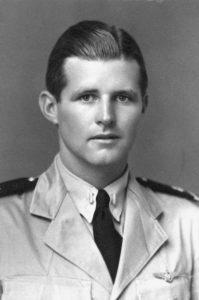
However valid, the criticism of his command must have reached Kennedy. He might have shrugged off the putdowns of other PT skippers, but it must have been harder to ignore the biting words of his older brother. At the time of the crash, 28-year-old Joe Kennedy Jr. was a navy bomber pilot stationed in Norfolk, Virginia, waiting for deployment to Europe. He was tall, handsome, and—unlike Jack—healthy. His father had long ago anointed him as the family’s best hope to reach the White House.
Joe and Jack were bitter rivals. When Joe read Hersey’s story, he sent his brother a letter laced with barbed criticism. “What I really want to know,” he wrote, “is where the hell were you when the destroyer hove into sight, and exactly what were your moves?”
Kennedy never answered his brother. Indeed, little is known about how he rated his performance on the night of August 2. But there is evidence that he felt enormous guilt—that Joe’s questions struck a nerve. Kennedy had lost two men, and he was clearly troubled by their deaths.
After the rescue boats picked up the 109 crew, Kennedy kept to his bunk on the return to Lumbari while the other men happily filled the notebooks of the reporters on board. Later, according to Alvin Cluster, Kennedy wept. He was bitter that other PT boats had not moved in to rescue his men after the wreck, Cluster said. But there was more.
“Jack felt very strongly about losing those two men and his ship in the Solomons,” Cluster said. “He…wanted to pay the Japanese back. I think he wanted to recover his self-esteem.”
At least one member of the 109 felt humiliated by what happened in Blackett Strait—and was surprised that Hersey’s story wrapped them in glory. “We were kind of ashamed of our performance,” Barney Ross, the 13th man aboard, said later. “I had always thought it was a disaster, but [Hersey] made it sound pretty heroic, like Dunkirk.”
Kennedy spent much of August in sickbay. Cluster offered to send the young lieutenant home, but he refused. He also put a stop to his father’s efforts to bring him home.
By September, Kennedy had recovered from his injuries and was panting for action. About the same time, the navy finally recognized the weaknesses of its PT fleet. Work crews dismantled the torpedo tubes and screwed armor plating to the hulls. New weapons bristled from the deck—two .50-caliber machine guns and two 40mm cannons.
Promoted to full lieutenant in October, Jack became one of the first commanders of the new gunboats, taking charge of PT-59. He told his father not to worry. “I’ve learned to duck,” he wrote, “and have learned the wisdom of the old naval doctrine of keeping your bowels open and your mouth shut, and never volunteering.”
But from late October through early November, Kennedy took the PT-59 into plenty of action from its base on the island of Vella Lavella, a few miles northwest of Kolombangara. Kennedy described those weeks as “packed with a great deal in the way of death.” According to the 59’s crew, their commander volunteered for the riskiest missions and sought out danger. Some balked at going out with him. “My God, this guy’s going to get us all killed!” one man told Cluster.
Kennedy once proposed a daylight mission to hunt hidden enemy barges on a river on the nearby island of Choiseul. One of his officers argued that this was suicide; the Japanese would fire on them from both banks. After a tense discussion, Cluster shelved the expedition. All along, he harbored suspicions that the PT-109 incident was clouding his friend’s judgment. “I think it was the guilt of losing his two crewmen, the guilt of losing his boat, and of not being able to sink a Japanese destroyer,” Cluster said later. “I think all these things came together.”
On November 2, Kennedy saw perhaps his most dramatic action on PT-59. In the afternoon, a frantic plea reached the PT base from an 87-man Marine patrol fighting 10 times that many Japanese on Choiseul. Although his gas tanks were not even half full, Kennedy roared out to rescue more than 50 Marines trapped on a damaged landing craft that was taking on water. Ignoring enemy fire from shore, Kennedy and his crew pulled alongside and dragged the Marines aboard.
Overloaded, the gunboat struggled to pull away, but eventually it sped off in classic PT style, with Marines clinging to gun mounts. About 3 a.m., on the trip back to Vella Lavella, the boat’s gas tanks ran dry. PT-59 had to be towed to base by another boat.
Such missions took a toll on Jack’s weakened body. Back and stomach pain made sleep impossible. His weight sank to 120 pounds, and bouts of fever turned his skin a ghastly yellow. Doctors in mid-November found a “definite ulcer crater” and “chronic disc disease of the lower back.” On December 14, nine months after he arrived in the Pacific, he was ordered home.
Back in the States, Kennedy appeared to have lost the edge that drove him on PT-59. He jumped back into the nightlife scene and assorted romantic dalliances. Assigned in March to a cushy post in Miami, he joked, “Once you get your feet upon the desk in the morning, the heavy work of the day is done.”
By the time Kennedy launched his political career in 1946, he clearly recognized the PR value of the PT-109 story. “Every time I ran for office after the war, we made a million copies of [the Reader’s Digest] article to throw around,” he told Robert Donovan, author of PT-109: John F. Kennedy in World War II. Running for president, he gave out PT-109 lapel pins.
Americans loved the story and what they thought it said about their young president. Just before he was assassinated, Hollywood released a movie based on Donovan’s book and starring Cliff Robertson.
Still, Kennedy apparently couldn’t shake the deaths of his two men in the Solomons. After the Hersey story came out, a friend congratulated him and called the article a lucky break. Kennedy mused about luck and whether most success results from “fortuitous accidents.”
“I would agree with you that it was lucky the whole thing happened if the two fellows had not been killed.” That, he said, “rather spoils the whole thing for me.”

